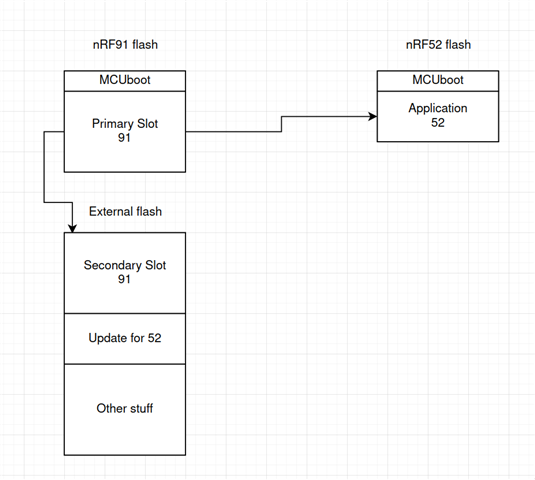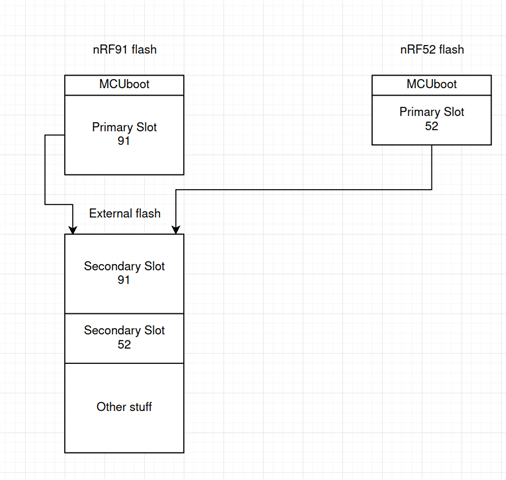Hello,
I am looking for information on how to perform a FOTA update on our nRF52811 BLE chip. I have some information in general about some of the options on nRF52* but I haven't seen anything specific to the 52811.
We have a board with the nRF9160 and nRF52811. The two are connected via a UART connection. The 9160 has an SPI external flash (MX25L25645G), the 52811 does not have external flash. We are using the NCS 2.0.0 currently.
So the question is what are our options for being able to do a FOTA update? From the docs I have already read it seems like we would not be able to have two partitions and would have to flash to one directly. I know this isn't the best way, but at this point, this is where we are and when we redesign the board we can make some upgrades.
Since I don't specifically know what options are available for the 52811, I can't really figure out what to try. Some of the docs that I was sent talked about setting up the other partition on external flash. Like I said, the 9160 has flash, and I know the 52811 has 2 SPI's. Is it possible to wire up one of the 52811's SPI's to the flash along with the 9160. I'm not an EE so not sure if that would even work. It's probably not the best idea. I was thinking of we could have different regions available only to the 9160 and the 52811, and maybe a shared region. Not sure if if that is possible (I am asking internally as well). Then the 9160 could download the new FW for the 52811 onto the external flash and notify the BLE chip it was there via the UART? Again, maybe that sounds crazy. Or if it can download via BLE on a service.
While we are at it, if you have any docs on trying to trim down the size the app is taking on the 52811, that would be good as well. We are not trying to do anything fancy right now with the BLE like bonding, encryption, etc. I would like to see how small I could get the app because it takes up probably 85% of the flash already and I have a feeling if there are options to enable FOTA on the 811, they are going to take up some space as well.
Looking forward to hear what you have to say. Hopefully you aren't laughing too hard...
h.




